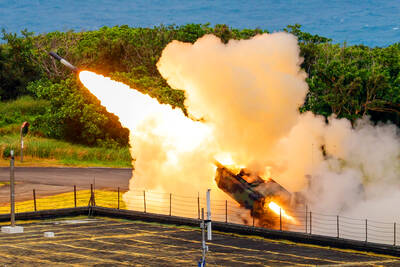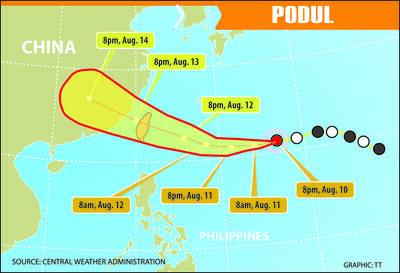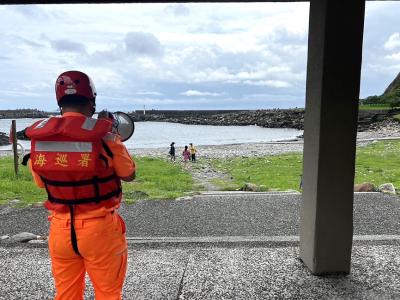Nouriel Roubini, the New York University professor who predicted the financial crisis, said the chance of a double-dip recession was increasing because of risks related to ending global monetary and fiscal stimulation.
The global economy will bottom out in the second half of this year, Roubini wrote in a Financial Times commentary yesterday. The recession in the US, the UK and some European countries will not be “formally over” before the end of the year, while the recovery has started in nations such as China, France, Germany, Australia and Japan, he said.
Governments around the world have pledged about US$2 trillion in stimulus measures amid the worst worldwide recession since the Great Depression. US Federal Reserve Chairman Ben Bernanke and other global policymakers have cautioned that the recovery is likely to be muted, indicating they would not soon remove all the stimulus injected into the financial system.
“There are risks associated with exit strategies from the massive monetary and fiscal easing,” Roubini wrote. “Policymakers are damned if they do and damned if they don’t.”
Government and central bank officials may undermine the recovery and tip their economies back into “stagdeflation” if they raise taxes, cut spending and mop up excess liquidity in their systems to reduce fiscal deficits, Roubini said. He defined “stagdeflation” as recession and deflation.
Those who maintain large budget deficits will be punished by bond market vigilantes, as inflationary expectations and yields on long-term government bonds rise and borrowing costs climb sharply, he wrote. That will in turn lead to stagflation, Roubini said.
European Central Bank (ECB) officials led by President Jean-Claude Trichet are suggesting they won’t rush to reverse their emergency stimulus amid mounting evidence of an economic recovery.
The ECB has cut its benchmark interest rate to a record 1 percent and is buying covered bonds and flooding banks with money.
“We see some signs confirming that the real economy is starting to get out of the period of freefall,” Trichet said at the Fed’s annual symposium in Jackson Hole, Wyoming, on Aug. 22.
This “does not mean at all that we do not have a very bumpy road ahead of us,” he said.
When needed, the ECB will implement a “credible exit strategy” from its crisis policies, Trichet said.
Meanwhile, the US must address the massive amounts of “monetary medicine” that have been pumped into the financial system and now pose threats to the economy and the dollar, billionaire Warren Buffett said last week.
Roubini currently expects a U-shaped recovery, where growth will be “anemic and below trend for at least a couple of years,” he said.
A full global recovery from the current recession may take two years or more, Nobel laureate Paul Krugman said earlier this month.
Rising unemployment, a global financial system that is still “severely damaged” and weak corporate profitability are among reasons why any recovery won’t be V-shaped, Roubini said.
“Strains persist in many financial markets across the globe,” Bernanke said in an Aug. 21 speech in Jackson Hole. “The economic recovery is likely to be relatively slow at first, with unemployment declining only gradually from high levels.”
Energy and food prices are also rising faster than warranted by economic fundamentals, which may also increase the risk of a double-dip recession, Roubini wrote, adding that they could be driven by speculative trades.
“Last year, oil at US$145 a barrel was a tipping point for the global economy as it created negative terms of trade and a disposable income shock for oil-importing economies,” he said. “The global economy could not withstand another contractionary shock if similar speculation drives oil rapidly toward US$100 a barrel.”

DEFENSE: The first set of three NASAMS that were previously purchased is expected to be delivered by the end of this year and deployed near the capital, sources said Taiwan plans to procure 28 more sets of M-142 High Mobility Artillery Rocket Systems (HIMARS), as well as nine additional sets of National Advanced Surface-to-Air Missile Systems (NASAMS), military sources said yesterday. Taiwan had previously purchased 29 HIMARS launchers from the US and received the first 11 last year. Once the planned purchases are completed and delivered, Taiwan would have 57 sets of HIMARS. The army has also increased the number of MGM-140 Army Tactical Missile Systems (ATACMS) purchased from 64 to 84, the sources added. Each HIMARS launch pod can carry six Guided Multiple Launch Rocket Systems, capable of

Authorities have detained three former Taiwan Semiconductor Manufacturing Co (TMSC, 台積電) employees on suspicion of compromising classified technology used in making 2-nanometer chips, the Taiwan High Prosecutors’ Office said yesterday. Prosecutors are holding a former TSMC engineer surnamed Chen (陳) and two recently sacked TSMC engineers, including one person surnamed Wu (吳) in detention with restricted communication, following an investigation launched on July 25, a statement said. The announcement came a day after Nikkei Asia reported on the technology theft in an exclusive story, saying TSMC had fired two workers for contravening data rules on advanced chipmaking technology. Two-nanometer wafers are the most

TRAJECTORY: The severe tropical storm is predicted to be closest to Taiwan on Wednesday and Thursday, and would influence the nation to varying degrees, a forecaster said The Central Weather Administration (CWA) yesterday said it would likely issue a sea warning for Tropical Storm Podul tomorrow morning and a land warning that evening at the earliest. CWA forecaster Lin Ting-yi (林定宜) said the severe tropical storm is predicted to be closest to Taiwan on Wednesday and Thursday. As of 2pm yesterday, the storm was moving west at 21kph and packing sustained winds of 108kph and gusts of up to 136.8kph, the CWA said. Lin said that the tropical storm was about 1,710km east of Oluanpi (鵝鑾鼻), Taiwan’s southernmost tip, with two possible trajectories over the next one

Tropical Storm Podul strengthened into a typhoon at 8pm yesterday, the Central Weather Administration (CWA) said, with a sea warning to be issued late last night or early this morning. As of 8pm, the typhoon was 1,020km east of Oluanpi (鵝鑾鼻), Taiwan’s southernmost tip, moving west at 23kph. The storm carried maximum sustained winds of 119kph and gusts reaching 155kph, the CWA said. Based on the tropical storm’s trajectory, a land warning could be issued any time from midday today, it added. CWA forecaster Chang Chun-yao (張竣堯) said Podul is a fast-moving storm that is forecast to bring its heaviest rainfall and strongest